Table of Contents
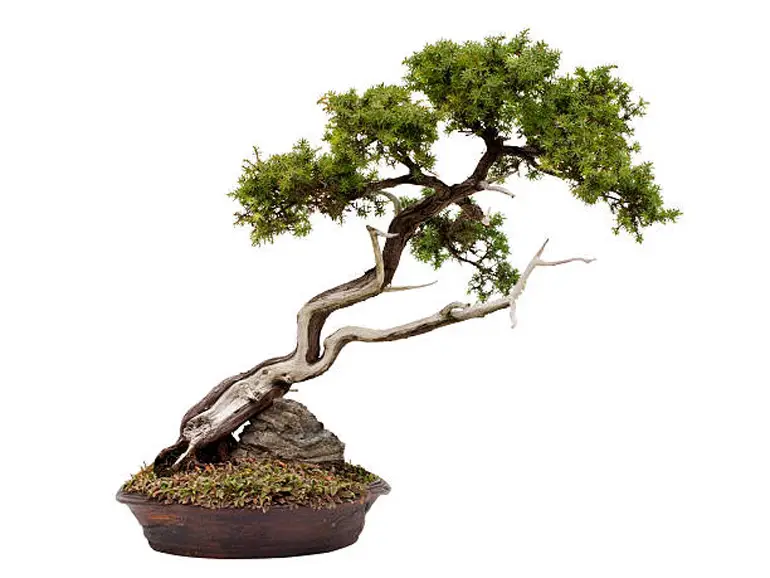
The Juniper Bonsai is among the most recognized and popular Bonsai trees for many good reasons. Thanks to branches’ growing characteristics and flexibility, it is straightforward to shape and train a Juniper Bonsai tree.
| Scientific name | Juniperus Chinensis |
| Average height | 40 to 50 feet |
| Average spread | 15 to 19 feet |
| Origin country | Asia |
| Family | Cupressaceae |
| Leaf | Evergreen |
| Best placement | Outdoor |
| Water | Moderate |
| Sunlight | Full sun |
| Maintenance | Low |
Types of juniper bonsai
The Juniper Bonsai can be found in various countries across the world. So far, there are over 50 different varieties of Juniper Bonsai trees that are available today.
Two of the more popular varieties are the Chinese Juniper Bonsai tree and the Needle Juniper Bonsai tree. These are also among the easiest Bonsai trees you can ever care for, making it an excellent option for people who might just be getting started in growing a Bonsai tree.
Below is a quick overview of the most common types of Juniper Bonsai trees out there:
Shimpaku juniper bonsai
The Shimpaku Juniper Bonsai is native to the mountain range of Japan. It shares many similarities with the Chinese Juniper with both of them having the same kind of foliage and yellowish-green eaves. This is a dwarf Juniper and is often used as a piece of decoration.
This bonsai is also very handy and can tolerate even the most extreme types of climates. This is a dioecious tree, meaning it only produces one organism so it is either female or male.
Chinese juniper bonsai
The Chinese Juniper Bonsai is a small bonsai that could endure climate changes. These plants prefer full exposure to the sun and also require well-drained soil for them to grow and thrive.
The Chinese Juniper Bonsai is different from other types of Bonsai trees as it is not a big fan of pruning and these plants can even be affected by the action.
Blue star juniper bonsai
The Dwarf Blue Star Juniper Bonsai is a type of slow-growing evergreen that needs very little trimming and is also easy and simple to care for.
With its unique appearance of silvery-blue foliage, the Blue Star Juniper Bonsai is low maintenance and attractive plant that you will surely love to tend to.
Cascade juniper bonsai
Creating a cascade Juniper Bonsai is meant to express and reflect the shape of a tree that has been through some tough times but still perseveres and remains standing. This is the best shape for a Bonsai that can make you imagine it as a result of the crushing weight of winter snow, landslides, or mudslides.
These kinds of natural catastrophes tend to twist trees downward in nature and this is what the form or style of a cascade Juniper Bonsai depicts.
Zen reflections juniper bonsai
Zen Reflections Juniper Bonsai creates the illusion of an old miniature tree found in nature. This is made using a hardy juniper with long and trailing branches that can be easily trained into various amazing Bonsai styles.
Juniper bonsai care
There are several things you need to know when it comes to properly care for your Juniper Bonsai.
Juniper bonsai climate
Your Juniper Bonsai tree is best grown outdoors all year long as it cannot really tolerate staying outdoors. These trees are frost-tolerant and hardy and they can survive even if temperatures go lower than 10 degrees Fahrenheit with no protection.
Once extreme temperatures during winter dip below this, you can provide your Juniper Bonsai with moderation protection from frost and wind to help them overwinter outdoors.
Do juniper bonsai need direct sunlight
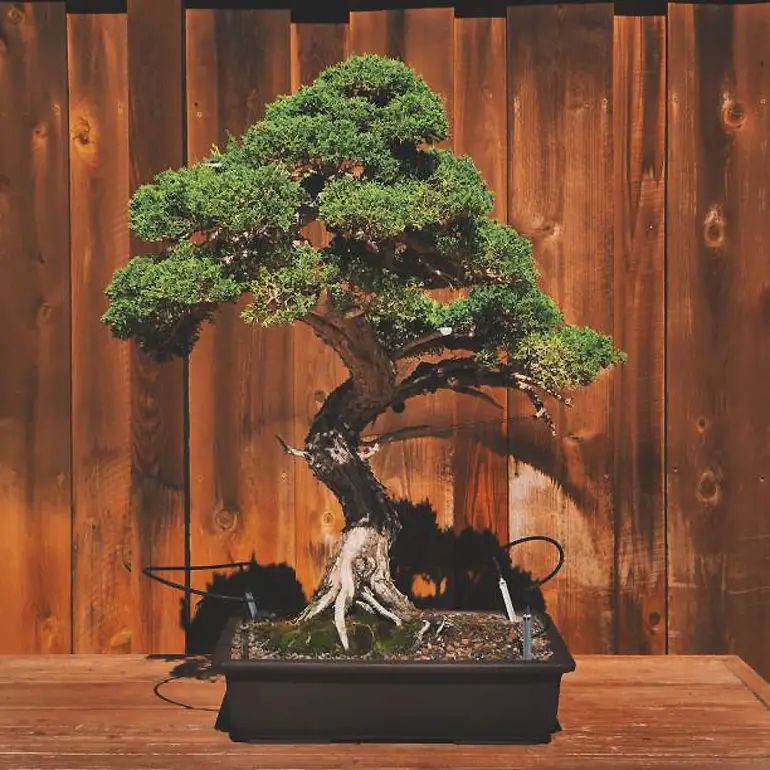
Yes, you need to keep your Juniper Bonsai under direct sunlight but make sure that it still has protection from too strong sunlight.
If you love bonsai that required full sun, you may also add birch tree bonsai, liquidambar bonsai, berberis thunbergii bonsai, rosemary bonsai or bonsai calamansi tree to your collection.
How to winterize a Juniper Bonsai
To keep your Juniper tree alive during winter, bury it in a pot, dig a hole, and put it inside to protect it against cold. Endure the pot is buried up to the tree’s first branches and place mulch up. This is necessary to keep your plant warm through the winter season.
Juniper bonsai fertilizer
You must feed your Juniper Bonsai with fertilizer. But, this must only be done once every month. Especially during months of summer, there are times when your Juniper Bonsai will receive all the things they need from the soil and the atmosphere so it is not required for you to fertilize them that often.
Also, just so you know, Bonsai trees become dormant when winter comes. This is the reason why you need a fertilizer with low nitrogen levels, especially during fall seasons since your Bonsai is going to be dormant all season long.
Fertilizer application on Juniper Bonsai
Apply liquid fertilizers once a week and pellet fertilizers once every month. For rapid growth, Nitrogen-rich fertilizers should be applied during springtime. However, you must ensure that the soil of high quality, lose and does not hold water for a long time (water drains faster) for the fertilizer to be effective. You can check with local nurseries for the best type of soil to use because they usually stock Bonsai soil in commercial quantity.
How often to fertilize Juniper Bonsai
You should fertilize your Juniper Bonsai tree once every 3 weeks as most of the nutrients (water, sunlight, and humidity) they need to survive are derived from nature. However, applying fertilizers to a Juniper Bonzai tree can be a little tricky because you have to always factor in the weather. The weather will determine what kind of fertilizer you are to fertilize a Juniper Bonsai tree with.
During the spring, it is best to treat your Juniper Bonsai tree with a fertilizer whose Nitrogen level is above average. And during the summer, you can make use of a fertilizer with an average level of Nitrogen.
Similarly, during fall, you should utilize a fertilizer with a low Nitrogen level because, during this time, the Juniper Bonsai tree is always inactive and cannot utilize the fertilizer due to its inactiveness. Although this should not stop you from giving them water because water is of the crucial elements for the survival of a juniper bonsai tree.
Juniper bonsai pruning
Regular and proper pruning is important for both the health and aesthetics of your Bonsai tree. In the case of Juniper Bonsai, it is recommended to pinch back growth instead of cutting it back since cutting may lead to the death of the surrounding needles.
Juniper trees can endure aggressive pruning well. However, you need to remember that these will not bud again from bare parts of the tree. Some foliage should always be left behind on the branches to guarantee ongoing growth.
When pruning a Juniper Bonsai tree, you must be very careful not to trim the leaves like a hedge. Doing that will weaken the Juniper tree and may cause the leaves to turn brownish. Part of a dense leave should be cut with sharp scissors. Pruning is important because it will help protect the plant against pests by preventing them from creating a breeding space on the tree. Furthermore, no branch of the tree must be left blank without leaves after pruning to encourage budding from every part of the tree.
When to prune juniper bonsai
Juniper Bonsai is best pruned during early spring and summer throughout the period of their active growth.
Juniper bonsai repotting
Bonsai trees generally don’t require frequent repotting and these include Juniper Bonsai trees. You can repot young trees at the maximum of every two years while the older trees can even go for as long as 5 years with no need to repot them at all.
You need to avoid any heavy root pruning for your Juniper Bonsai during the time of repotting to ensure that the plant doesn’t get shocked.
Juniper bonsai pests and diseases
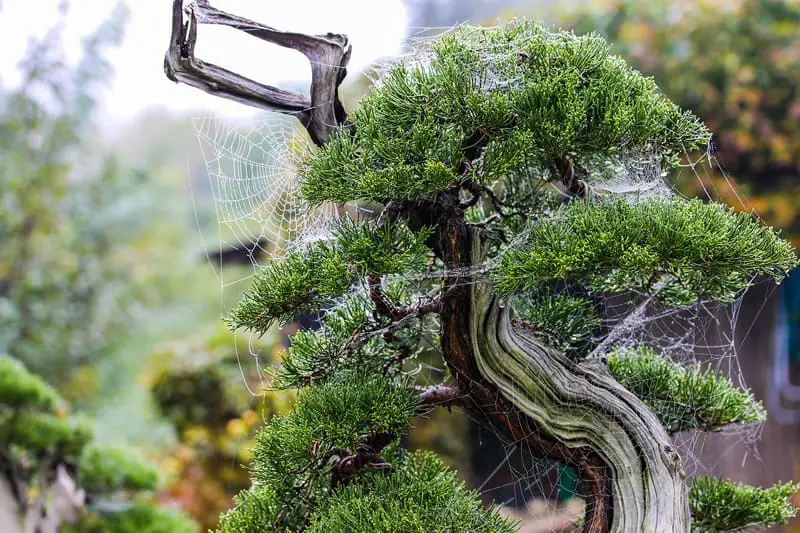
A healthy Juniper tree is actually quite resistant to diseases and pests. But, it is a wise idea that you watch out for some common Juniper diseases or pests. Keep an eye out for signs of Juniper aphids, Juniper scale, spider mites, Juniper webworms, and Juniper needle miners.
Thinning out foliage pads regularly can help lower the risks of pest infestations since dense foliage pads can give them the perfect environment to thrive and grow. Some Juniper tree species are also prone to fungal rust diseases.
Juniper bonsai soil
To get the best results, you can use the commercially available bonsai soil mixes made for Juniper trees. Bonsai soil mixes can drain properly to allow both water and air to get to the roots and are often a combination of fine pit or gravel, pumice, organic potting compost, and akadama, a form of Japanese clay granulate. You can find these at most plant stores or garden centers or online from the specialty Bonsai retailers.
Juniper bonsai watering
Just like most Bonsai, your Juniper Bonsai requires watering regularly to ensure that the soil remains moist all the time. But, take note that these plants cannot really tolerate being waterlogged.
Juniper does not require excessive water to survive; rather, they want water in a moderate proportion. Letting the soil completely dry out before watering all over again is one of the best ways to achieve this. Although you must not let your eyes off the condition of the soil every day because they require close monitoring. You can use your finger or a chopstick to monitor how moisturized the soil is. It is important to monitor the moisture level of the soil because the root of the tree cannot withstand the wetness of the soil. You can water the foliage of the tree using a spray bottle to control the water outpour.
The general rule is to let the soil dry a bit in between waterings. You also need to prevent allowing it to completely dry out and always water your plant deeply. It is imperative to make sure that your Bonsai has enough drainage to ensure that the soil doesn’t become waterlogged.
Placement of Juniper Bonsai tree
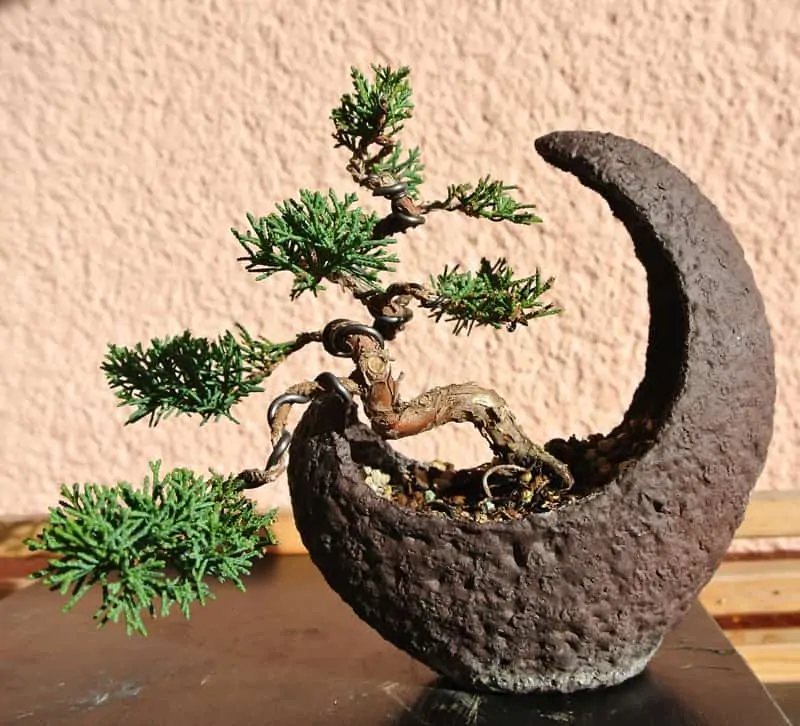
Juniper trees strive under a sunny condition with an uninterrupted flow of air. You must avoid placing a Juniper tree in an enclosed area (for example a garage) because the flow of air in such an area will be restricted. The only situation where a Juniper tree can survive under such conditions is if you create artificial ventilation by placing a fan close to its location and blowing air directly to the tree.
Another key factor to consider before placing a Juniper tree is the humidity level of that particular area. It most is placed in a place where it can be exposed to constant moderate levels of humidity. And also, direct sunlight is essential for the growth of Juniper trees. A juniper tree must receive direct sunlight (morning and afternoon sun) for at least 5 hours a day.
Sunlight is very crucial to the growth of a Juniper tree, and that is why when it is kept indoor for an extended number of times, it could die. Extra attention must be given to juniper trees during winter when the temperature usually drops below -10c. During this time, Junipers are always inactive and as a result, they usually have a regarded growth rate, and exposure to sunlight should be minimal.
Are Juniper Bonsai trees easy to care for
Juniper Bonsai is not just a stunning species of the Bonsai tree, but they are also easy to care for that even someone with little or no knowledge about the tree can it and record laudable success.
How long does it take to grow a juniper bonsai
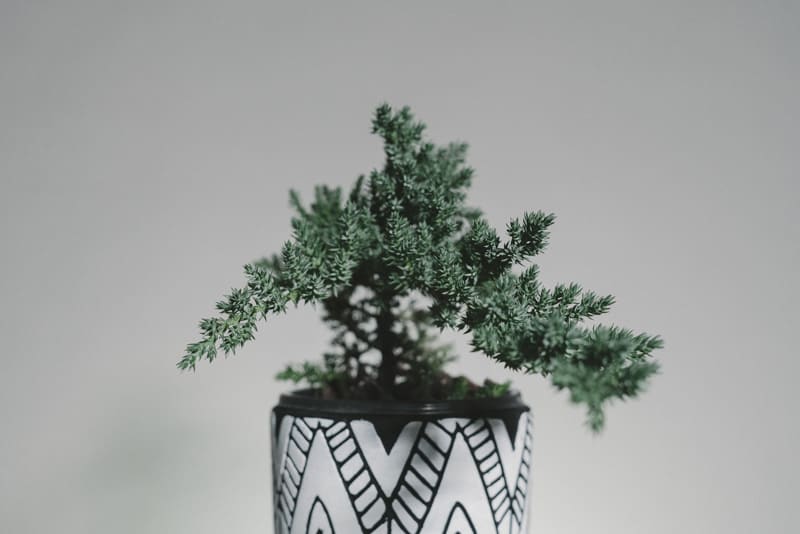
The majority of Juniper Bonsai trees can grow at a decent rate although they are not really regarded as fast growers. Still, some species are exempted from the rule like the Green Mound Juniper.
It is good for a Bonsai tree since growing too fast can make it more challenging to manage the design and shape of the tree. But, you will still want adequate growth so that you can work with new sprouts for creating the kind of design you like.
How to tell the age of a Juniper Bonsai tree
Interestingly, your math has to be good to know the actual age of a Juniper tree. You can tell the age of a Juniper tree by multiplying the diameter of the tree by the growth factor.
How to tell if Juniper Bonsai tree is dead
Scrape off the bark of the Juniper trunk with a knife or any sharp object. If the peeled area is greenish, then your tree is alive; but if it is brownish or greyish, then your Juniper is likely to be dead.
How much light does a bonsai juniper tree need
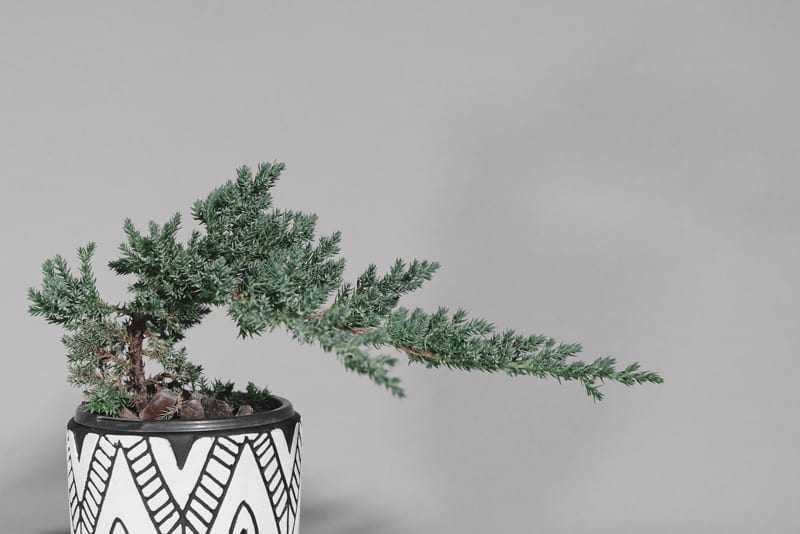
Apart from a few species, your Juniper Bonsai trees are not able to live and thrive indoors. They need to stay outdoors instead all year long to get the best results.
Many Juniper Bonsais also need to be out under bright sunlight the whole day, primarily direct light. Once again, there are certain species such as the Green Mound Juniper that can better tolerate less than ideal light and positioning that makes it easier to care for and handle all year long.
Although planting the trees in containers instead of in the ground will mean that they completely depend on you and need more attention, this only means that moving them will be easier for them to get the shade and sunlight at the right times. It lets you relocate the Bonsai with ease daily as required in the heat and bring it to a safer and more protected spot during winter.
Why are the green needles falling off my bonsai juniper
Several months of overwatering can result in root-rot that is only visible with the tree dropping its green needles and the tree losing its strength. Watering should only be done once the soil gets a bit dry then repot this in better soil when the tree gets better.
Underwatering is also a common reason for Juniper Bonsai trees to drop their needles. Although overwatering your tree will make it lose its strength little by little, if the tree is underwatered, it will drop its needles in a matter of days. Sadly, there is no cure to this issue so you need to be watchful of your tree and water it properly.
A tree with a disease or pest or has gotten too little or too much fertilizer will also lose its strength and drop its green needles.
How to keep Juniper Bonsai leaves green
To ensure your Juniper has green leaves, read the instructions given below.
- Ensure it is repotted every two years when it is less than 5 years old and every 3 years.
- Use insecticides or pesticides f you have insect or pest-infested plants.
- Trim the branches of your Junipers often.
- Make use of good-quality fertilizers.
- Water your Juniper moderately so the soil doesn’t dry up for a long time and it is not soaked up either.
- Make sure your Juniper receives adequate sunlight for about 4 hours a day.
Why is my Juniper Bonsai turning yellow
Several reasons can cause your Juniper Bonsai to turn yellow but a few will be extensively discussed below.
Lack of sunlight
Without sunlight, no living thing can survive (human and animal inclusive). For any green plant, sunlight is very important because that is the primary source of food/energy for them.
Juniper Bonsai is no exception as sunlight constituent of their nutrient. When there’s a lack of sunlight, green plants suffer will lead to chlorophyll deficiency. Plants with chlorophyll deficiency can be easily identified by their yellowish leaves.
Juniper Bonsai belongs to this kind of plant and that is why their leaves may turn yellow when they don’t receive enough sunlight.
Inaccurate watering plan
It is an indisputable fact that Juniper trees need water; but the most delicate and interesting aspect of it is that too much watering can kill them, and if you are being careful not to overwater them and you ended up under watering them, they wouldn’t survive. The survival of your Juniper tree lies in striking a balance between over-watering and under-watering.
How to water a Juniper Bonsai tree
Before you water your plant every day, poke your finger into the soil to feel the moisture level of the soil. If you feel the soil is soaked in water or it is at a normal level, you do not have to get it. But if after poking your finger into the soil, it is dry, then you can moderately add water to keep it moisturized.
Water your plant every day with the intention of not having completely dry soil and not with the intent of always having moisturized soil.
Lack of Nutrition
Nutrition is very important for the survival of every living thing. Without proper nutrition, it will be difficult for plants to develop new cells. Plants get most of their nutrients from minerals extracted from the soil.
When you plant your Juniper tree in mineral deficient soil, it will not have access to adequate nutrients necessary for growth; and as a result, may start to have yellowish pigmentation on its leaves. Mineral deficiency in plants can be corrected by applying fertilizers as recommended by an arborist.
Root pruning
Yes, it is ok to prune the root of your Juniper tree; but while you are at it, be very careful not to over prune its root. Plants use their root to dig further into the soil to tap necessary minerals from the soil.
Therefore, anytime you prune the root of your Juniper tree, you are reducing its ability to generate its nutrients from the soil. When Junipers don’t have sufficient nutrients due it’s inability to generate from the soil, they may start having yellowish coloration on their leaves.
Insects, pests, and worm infestation
Before I go further I am sure you already have an idea of what I’m about to discuss here. Insects and pests are no friends to your Juniper tree as they can affect their stems and root. These two organs are integral for the growth of any plant. While the root is responsible for the generation of food from the soil, the stem transports these foods to the other necessary parts of the plant system.
When your plant is infested with pests and insects, not they are not just going to be competing with your plant for nutrients, but they will also start to suck nutrients off its stems and root; thereby making them weaker: consequently, it will be extremely difficult for them to generate and transport food through the plant system.
This may cause you Jupiter plant to start growing yellowish leaves instead of green due to a lack of food nutrients. Some pests that are known to affect Juniper trees include; mealy bugs, spider mites, webworms, aphids, needle miners e.t.c. With proper attention, you can minimize the chances of your Juniper tree getting infested.
The end of an era
This may seem disheartening, but it is a sad reality that you must accept. Every living thing has a lifespan – the beginning and the end. This is the last stage for every other cause that I have been discussing so far.
Every other cause can be remedied if adequate attention is given to your Juniper tree; but at this stage, the chances for survival are usually very slim. Therefore, must take the necessary steps at an early stage when you notice that your Juniper leaves are turning yellow because it might be a sign that your beloved tree is dying.
Why is my Juniper Bensei brittle
Several factors may cause your Juniper to brittle, but the most likely cause is lack of water.
Can juniper bonsai trees live indoors
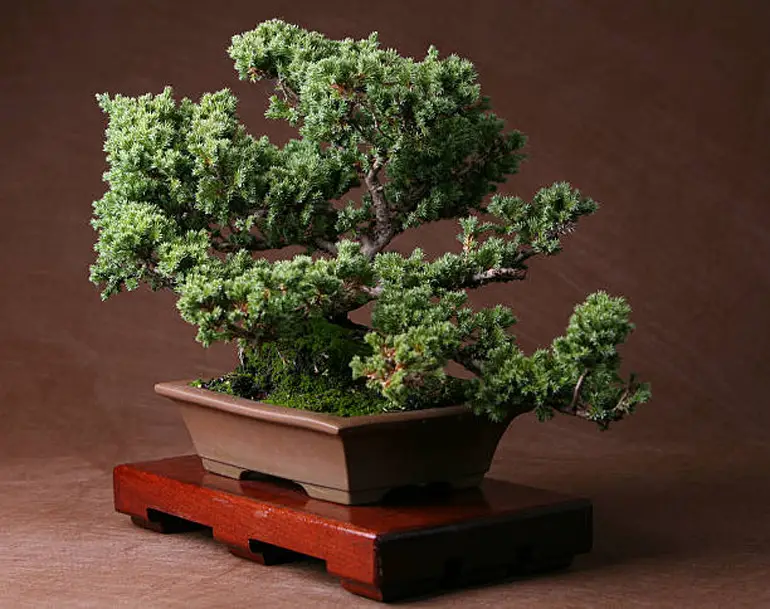
Juniper Bonsai trees need direct and bright sunlight for most of the day. This is why these trees are most suitable for growth outdoors all year long.
How to keep Juniper Bonsai live indoors
Juniper is one of the top choices for garners and lovers of indoor plants. This is because of its resilience and easy maintenance nature; however, this does not mean they can survive in any kind of condition because they will die when treated unsuitably. Explained below are some useful tips on how you can keep your Juniper Bonsai alive indoors.
Can Juniper Bonsai live outdoors
Yes, Juniper Bonsai can live outdoors. The most interesting thing about Juniper Bonsai is that it doesn’t matter whether it is planted outside or inside; it will survive regardless, provided that it is growing under the right condition.
The right condition for a Juniper Bonsai to survive is placing it where it can be exposed directly to sunlight; constant, water supply, moderate humidity, and temperature level. Anything short of this might cause your Bonsai tree to wither.
Do Juniper Bonsai trees grow flowers
No, junipers don’t grow flowers. If you want a Bonsai species that grow beautiful flower, you can go for Azalea.
How to get rid of spider mites on Juniper Bonsai
Spider mites will hardly cause significant damage to your plant. All you have to do is apply mild insecticide if you believe your Juniper is infested by a spider mite.
Please refer to our previous in-depth how to get rid of spider mites on bonsai guide if you need more information.
How to thicken a Juniper Bonsai
To ticken your Juniper Bonsai, plant it in the ground or a large pot. Alternatively, you can make use of sacrificial branches or simply use supplements.
Are juniper bonsai allergic to dogs
While Juniper Bonsais are not highly toxic to dogs, these may still pose some harm. Junipers are regarded to be mildly toxic for dogs due to the mildly toxic chemicals found in their leaves and stems. Junipers may not kill dogs but they may still make these pets sick or even allergic.
Is Juniper Bonsai poisonous to cats
Yes, the Japanese Jupiter Bonsai tree is poisonous to cats. Some other Bonsai trees that are equally poisonous to your cat include; Sago palm, Azalea, Ficus, Ambrosia Mexicana, Jade, Fig e.t.c However, not all Bonsai trees are poisonous to pets (cat inclusive). Some none toxic Bandai species include; Bamboo palm, Christmas cactus, Japanese Maple, Foucalt tea, Hibiscus bonsai e.t.c.
Regardless of the toxicity level of a Bandai tree, I believe it is important for you to know that your cat can suffer discomfort after eating any kind of Bonsai tree. According to findings, cats have shown some symptoms of illness like; vomiting, black tarry stool, diarrhea, inappetence, lethargy e.t.c after chewing on the Bondai tree. The question of whether is merely an allergic reaction is a topic to be discussed other times.
![Pittosporum Bonsai [Pittosporum Tobira]](https://www.bonsai-express.com/wp-content/uploads/2022/05/Pittosporum-Bonsai-365x200.jpg)
![Sorbus Bonsai [Sorbus Aucuparia]](https://www.bonsai-express.com/wp-content/uploads/2022/05/Sorbus-Bonsai-365x200.jpg)
![Tsuga Bonsai [Tsuga Canadensis]](https://www.bonsai-express.com/wp-content/uploads/2022/05/Tsuga-Bonsai-365x200.jpg)
![Tamarix Bonsai [Tamarix Ramosissima]](https://www.bonsai-express.com/wp-content/uploads/2022/05/Tamarix-Bonsai-365x200.jpg)